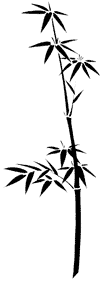|
|
Development and styles of Japanese calligraphy
The calligraphy is unique fine arts of the East. It has come to Japan from China approximately in V century A.D., and within centuries the skill of Chinese calligraphers was studied and improved by Japanese masters of calligraphy. The Japanese calligraphers have created some new styles of hieroglyphs writing, having greater expressiveness and emotionality:
- Kaisho means the charter. The lines are written one after another. The lines are written distinctly, confidently. The hieroglyphs are precise, angular, square under the form.
- Gyosho – semi-italics. Faster writing. Lines are smooth, rounded off.
- Sosho – italics. A prompt writing in few movements. Lines are fast, flying.
In the basis of Japan’s calligraphical styles is concept that the written text should give aesthetic pleasure. The visual perception of the text does not concede to perception of pictures and plays the important role in understanding of sense.
For strengthening of the text emotional influence there were formed the forms of certain calligraphical writing for separate literary styles:
- historical treatises have been written by charter Kaisho,
- plays Dzeruri have been written by fancifully twirled, dense cursive writing which has been stretched at width and flat on vertical,
- Poetic collections have been written by thin, vertical, extended line of cursive writing Kana.
Today this graceful style of the writing is used for record of ancient songs and verses. It represents aesthetic pleasure to a greater extent than a way of information transfer. Not everyone Japanese today can read such verses, not everyone calligrapher can write by this style, but everyone is capable to estimate beauty of the refined elegant lines.
|
 |
